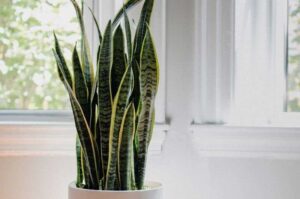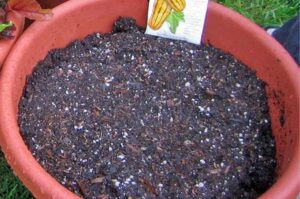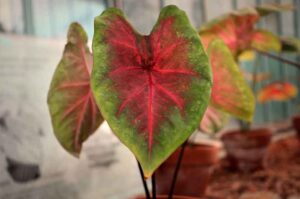Why is my Alocasia polly dying? What should I do to revive it?
Alocasia polly is an important and beautiful member of the aroid family. This indoor plant is famous for its attractive foliage. The large leaves are deep green colored along with white veins. They really look unique and appealing.
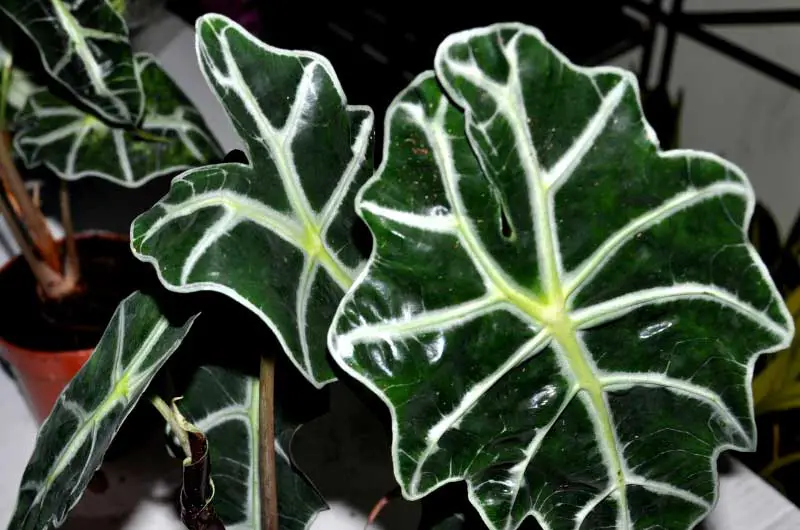
Although it is a pleasure to have such a beautiful plant inside the house, it is a challenging task to grow this plant. Beginners always face a lot of issues with this plant. It is not like they can’t grow it. But a lot of care is needed to grow this plant.
In this article, we are going to discuss some common problems with Alocasia polly and discuss the question about Why my Alocasia polly is dying?
Why my Alocasia Polly is dying?
Alocasia polly is a plant, originated from the tropical and subtropical parts of Asia and Eastern Australia. This plant is very selective for its requirements. If it is not getting proper growing conditions then it will immediately show the symptoms of physical stress, and it also leads to the death of the plant.
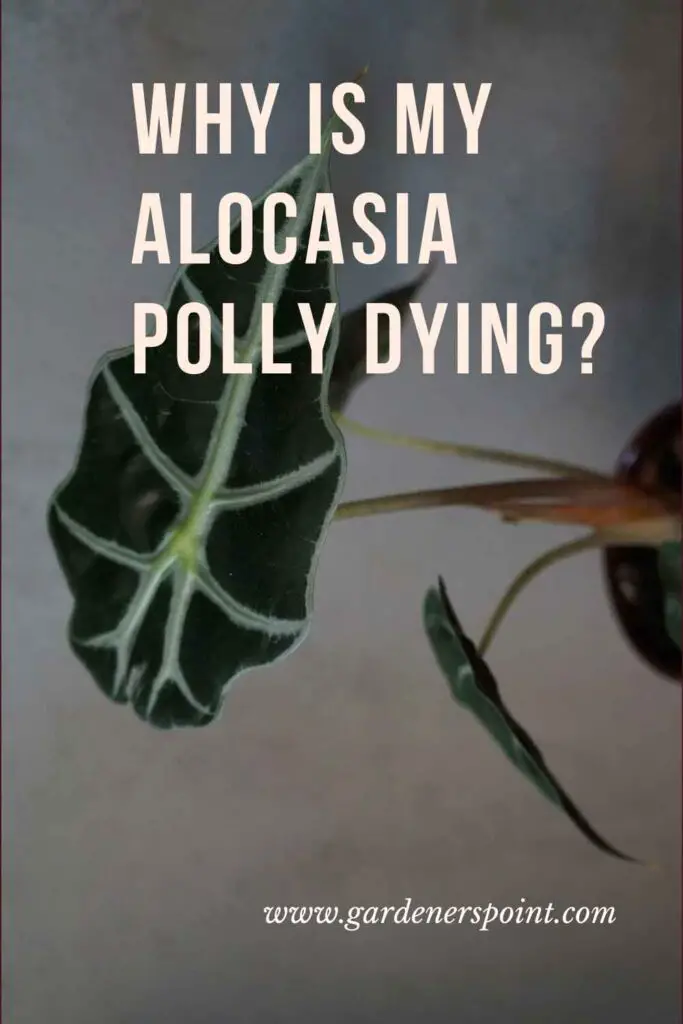
The most common reasons for which an Alocasia polly is dying are overwatering, underwatering, lack of nutrients, low temperature, or improper lighting conditions. Either only one problem or a combination of them if occur together, then this plant will immediately behave weirdly to show the stress. If the problem is not resolved immediately, then your Alocasia polly will die.
The grower has very little time to react. He has to immediately identify the issue and resolve it at the same time. If it is late then the plant is surely going to die. It is a matter of timing.
Since Alocasia polly is a very sensitive plant, providing it a home-like environment will help the plant to acclimatize to your place, and grow properly. A homelike environment means an environment that mimics the tropical forests, hot and humid with bright indirect light.
Now let us discuss all the issues in detail and analyze why your Alocasia polly is dying?
The plant is new to the house
If you have just bought an Elephant’s ear plant for your house, and it is showing some weird symptoms, then it may be due to the new environment. The plant needs some time to acclimatize to its new environment. Till this, it will show symptoms of stress like drying and yellowing of leaves, slow plant growth, etc.
After it has acclimatized to its new environment, then it will again continue its growth. You have to do nothing but provide the appropriate growing condition for the plant.
High humidity, evenly moist but not oversaturated soil, warm temperature (18 to 25 degrees Celcius), bright indirect sunlight are the essential requirement for this plant.
Don’t keep this plant in a very small pot, otherwise the plant will immediately root bound.
Select a good-sized pot and some well-draining potting soil. The pot should also have proper drainage holes. The plant just hates to live in the wet foot. It will easily rot its roots.
Keep your plant in a place getting a good amount of bright indirect light. Make proper arrangements to keep the surroundings humid. Your plant will soon acclimatize to its new environment and start its growth, showing some fresh new leaves.
Overwatering
An Alocasia polly plant may die due to overwatering. If you are applying too much water to your Elephant’s Ear plant, and keeping it wet foot always, then it is not good for the plant.
A prolonged waterlogging condition will prevent the plant roots to respire properly. In such an anaerobic condition, the roots will start rotting. As a result of which the plant will not get enough water to carry out photosynthesis. So the plant will ultimately wilt.
The leaves turn yellow and then droop. If this condition prevails for a long period of time, then the plant will eventually die.
Preventive measures
- To prevent your plant from dying due to overwatering, you have to apply water regularly, but less in quantity.
- You have to just keep the soil moist, but not too much soggy and waterlogged.
- You can just check when to apply water by touching your finger to the top two-inch layer of soil. If the soil is dry then only apply water, otherwise not.
- Take a well-draining potting soil, so that even if you have applied to much water, it will remove all the extra amount of water.
- Make proper drainage holes in your pot so that the extra water can escape out quickly.
Overwatering is a serious issue with the Elephant’s ear plant. If the preventive measures are not taken in time, then it will surely lead to the death of the plant due to root rot.
Read our article about How to make a perfect potting soil for indoor plants?
Underwatering
The Alocasia polly plant loves to keep its feet in slightly moist soil. A dry period for a small period of time will be manageable, but a prolonged dry spell will severely hamper the physical condition of the plant.
Dry soil conditions will stop the plant from getting enough water to meet the metabolic activities of the plant. The plant starts wilting. If this condition persists for a long period of time, the plant will ultimately die.
To prevent the plant from dying due to under watering, you have to regularly check the soil. If the top two-inch layer of potting soil is dry, then immediately go for irrigation.
Lack of nutrients
It is a rare but possible phenomenon. Your Alocasia polly plant may die to lack of nutrients. But is very rare. It can only happen if you are very careless for your plants.
To prevent your plant from dying due to lack of nutrients, you can apply any balanced liquid fertilizer available at your nearest garden center. Go for fertilizing your plant once in every two months. It will be sufficient to feed your plant with necessary plant nutrients.
Improper lighting condition
The Alocasia polly plant loves an environment with bright indirect sunlight. As these plants are originated beneath the large trees of the tropical forests, they only can get diffused sunlight there. No direct sunlight. Therefore, if they are placed in direct sunlight, their leaves will burn.
Also, a low light condition is not good for this plant. Extremely low light makes photosynthesis difficult for the plant.
Therefore, a bright indirect light is ideal for this plant. You can place this plant near an east or north-facing window. If the sunlight is too direct, then you can add a curtain to the window.
You will love to read our article Is my plant getting too much light?
Low temperature
Like all other tropical houseplants, Alocasia polly also struggles to survive at a low temperature. A temperature ranging from 18 to 25 degrees Celcius is ideal for this plant.
Freezing temperatures make the plant susceptible to chilling injuries. If the temperature started to drop down, the plant will stop its growth and at further low temperatures, the plant may die.
Special care has to be taken during the winters. The plant should be moved to a warm place.
How to revive a dying Alocasia polly plant?
In order to revive a dying Alocasia polly plant, you have to first identify the problem. By analyzing the points discussed above, you can easily identify the issue which is killing your Alocasia polly plant. Then you have to take the necessary steps against the issue.
- In most cases, the death of the plant is due to overwatering. You can also change the potting soil and add some freshly prepared potting soil to the pot. Make sure that both the pot and potting soil have characteristics of draining excess water. It will prevent the issue of overwatering.
- At the time of repotting check if there are any symptoms of root rot. If found, then cut the rotted roots.
- Water your only when the top two-inch layer of soil is dry.
- Fertilizer during the growing period of your plant once every two months. Summer and spring are the actively growing period for Alocasia polly. Never fertilize during winter.
- Rotate your plant on a regular basis so that, your plant can get light evenly and grow uniformly.
- Keep the plant free from insect pest infestation. Wipe your plant regularly with water-soaked or alcohol-soaked cotton. It will keep the pest like aphids, and jassids away, and also keep the plant clean.
- During the winters, move the plants to a new location that is warmer than before.
Final thoughts
For Alocasia polly, the list of threats is long. But if you can overcome those threats and able to survive your plant, then the reward will worth the hard work and patience. Constant observation of the plant and providing a good growing condition, are the only demand that the plant has.
It is not impossible to grow an Alocasia polly plant in your house, rather a little bit difficult.
HAPPY GARDENING

